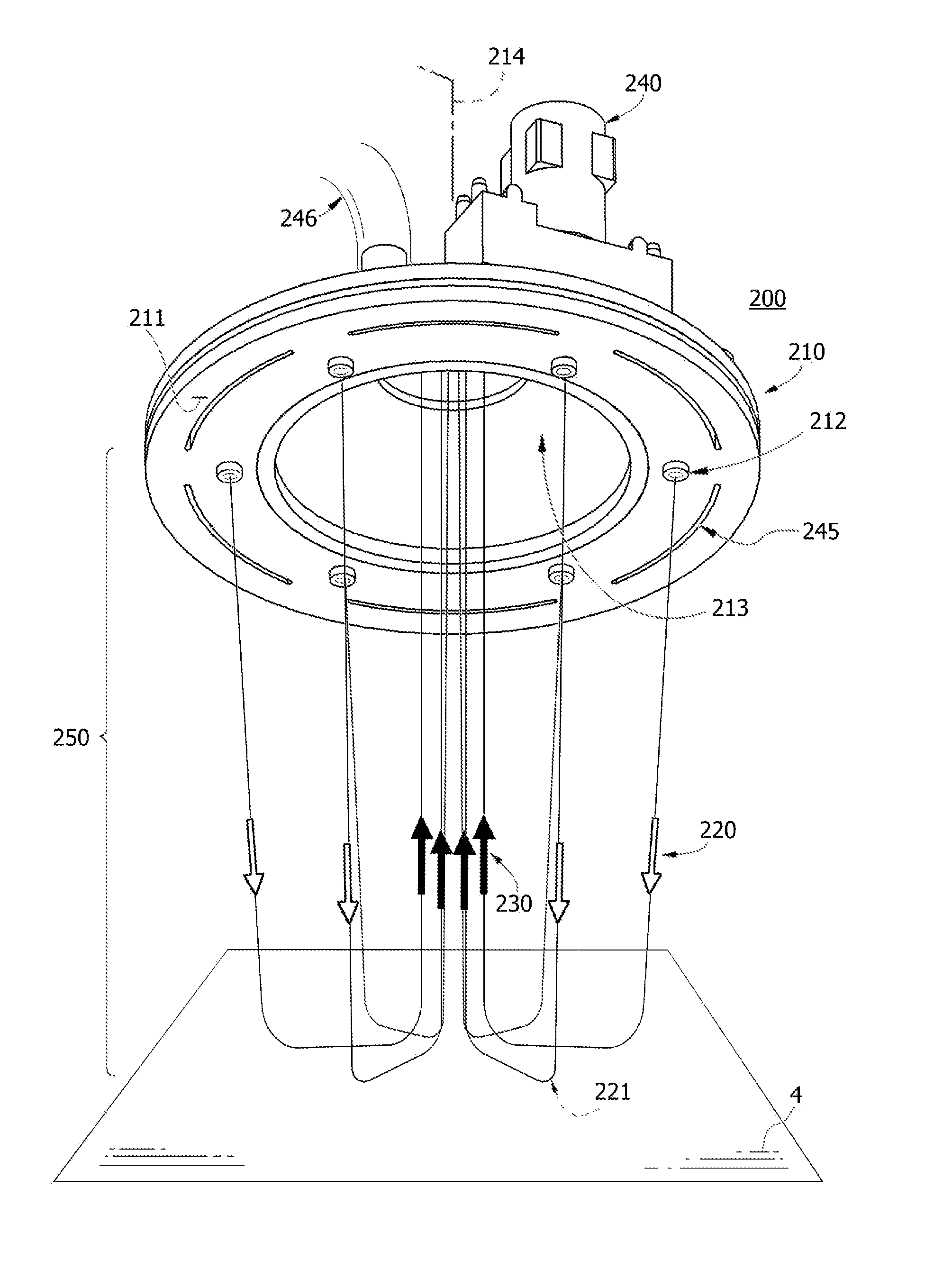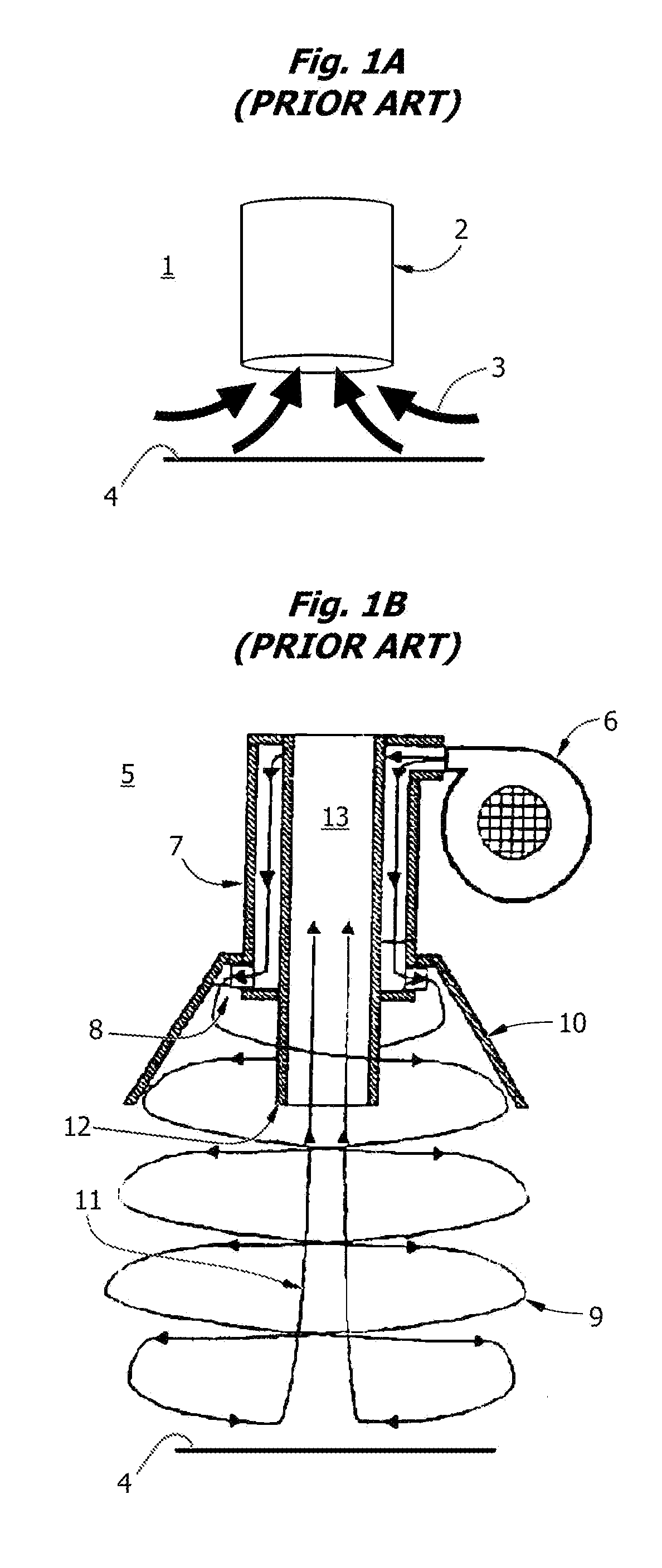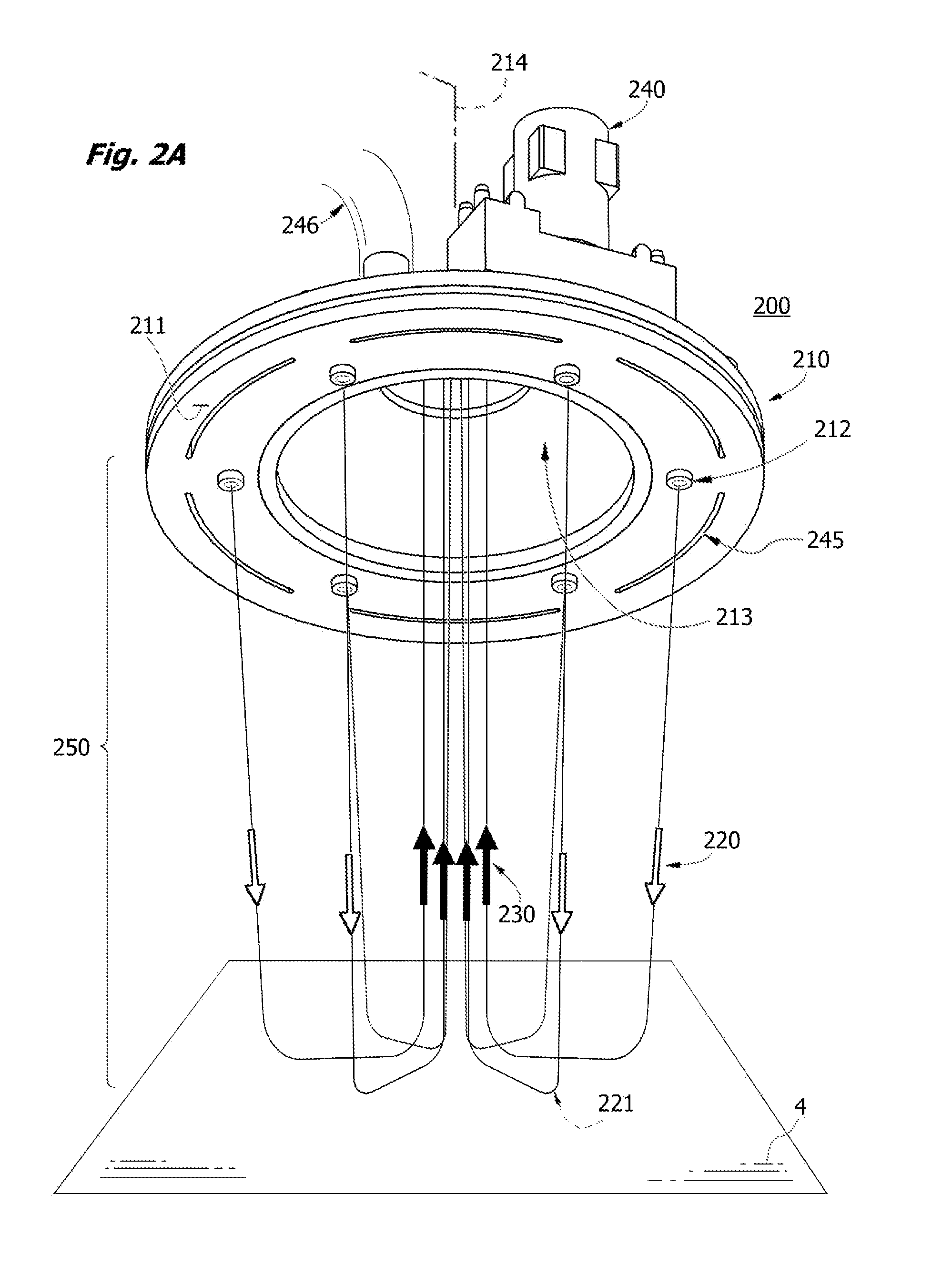Particle Interrogation Devices and Methods
a particle interrogation and particle technology, applied in the direction of optical radiation measurement, particle separator tubes, spectral modifiers, etc., can solve the problems of inability to successfully aspirate particles under the conditions described, inability to sample particles, and inability to achieve the effect of reducing elutriative losses and improving overall sampling efficiency
- Summary
- Abstract
- Description
- Claims
- Application Information
AI Technical Summary
Benefits of technology
Problems solved by technology
Method used
Image
Examples
example
[0249]In one study, 20 nanograms of TNT trace explosive was deposited on a glass surface using a dry transfer technique from a Teflon® Bytek strip and interrogated with a surface sampler of the invention. The dry transfer technique was performed essentially as described by Chamberlain (U.S. Pat. No. 6,470,730). Particle size distribution (crystal size distribution) was about 10-200 microns. The apparatus was operated with a 3 mm jet array at 80 psig back pressure. The dislodged TNT particles were aspirated at a 1000 sLpm flow rate into a high flow air-to-air particle concentrator with aerodynamic lenses and skimmer and captured in a particle trap formed of a 13 mm pervious member. Explosives constituents of captive particles were dissolved by injection of 100 μL of acetonitrile, of which 10 μL was injected into an IMS detector. A measurable TNT signal was observed. The experiment demonstrates detection of trace explosive residues at a nanogram detection level using a jet-assisted no...
PUM
 Login to View More
Login to View More Abstract
Description
Claims
Application Information
 Login to View More
Login to View More - R&D
- Intellectual Property
- Life Sciences
- Materials
- Tech Scout
- Unparalleled Data Quality
- Higher Quality Content
- 60% Fewer Hallucinations
Browse by: Latest US Patents, China's latest patents, Technical Efficacy Thesaurus, Application Domain, Technology Topic, Popular Technical Reports.
© 2025 PatSnap. All rights reserved.Legal|Privacy policy|Modern Slavery Act Transparency Statement|Sitemap|About US| Contact US: help@patsnap.com



